CSS3 shadow implementation methods and techniques are fully solved
May 04, 2021 CSS3
Table of contents
1. The container sets the shadow box-shadow
Web design often use the effect of shadows, through shadows can be easier to highlight an element, in the absence of CSS3, generally use pictures as shadow effects, and now by using CSS3 text-shadow and box-shadow properties can be set text and container shadows. me. owever, this feature only works in CSS3-supported browsers, such as Firefox 3.5, Safari 3.1 plus, and Google Chrome.
The container sets the shadow box-shadow
box-shadow: h-shadow v-shadow blur spread color inset;
Vertical: Specifies a vertical offset shadow. A positive value (i.e., 5px) causes the shadow to appear at the bottom of the box, while a negative value (i.e.: - 10px) causes it to be tilted upward.
blur (blur): Set the softening radius. T he default is 0, which means there is no blur. P ositive values increase blur, while negative values actually narrow the shadows. This property defaults to 0.
Color: The color value, which is the shadow color.
Reminder: This property can be added to any element, such as pictures, Div, SPAN, P tags, and so on.
<html>
<head>
<title>W3Cschool(w3cschool.cn)</title>
<meta http-equiv="Content-Type" content="text/html; charset=utf-8" />
<style type="text/css">
#shadow {
box-shadow: 10px 10px 5px #888888;
width:500px;
padding:5px;
text-align:center;
font-size:20px;
background:#21759b;
margin:0 auto;
color:#ffffff;
}
</style>
</head>
<body>
<div id="shadow">W3Cschool(w3cschool.cn)</div>
</body>
</html>


.box-shadow{
//Firefox4.0-
-moz-box-shadow:h-shadow v-shadow blur spread color inset;
//Safariand Google chrome10.0-
-webkit-box-shadow:h-shadow v-shadow blur spread color inset;
//Firefox4.0+、 Google chrome 10.0+ 、 Oprea10.5+ and IE9
box-shadow:h-shadow v-shadow blur spread color inset;
}
<!DOCTYPE html>
<html>
<head>
<meta content="text/html; charset=utf-8" http-equiv="Content-Type">
<title>CSS3属性:box-shadow测试</title>
<script type="text/javascript" src="js/jquery.min.js"></script>
<script type="text/javascript" src="js/jquery.boxshadow.js"></script>
<style type="text/css">
.box-shadow-1{
-webkit-box-shadow: 3px 3px 3px;
-moz-box-shadow: 3px 3px 3px;
box-shadow: 3px 3px 3px;
}
.box-shadow-2{
-webkit-box-shadow:0 0 10px #0CC;
-moz-box-shadow:0 0 10px #0CC;
box-shadow:0 0 10px #0CC;
}
.box-shadow-3{
-webkit-box-shadow:0 0 10px rgba(0, 204, 204, .5);
-moz-box-shadow:0 0 10px rgba(0, 204, 204, .5);
box-shadow:0 0 10px rgba(0, 204, 204, .5);
}
.box-shadow-4{
-webkit-box-shadow:0 0 10px 15px #0CC;
-moz-box-shadow:0 0 10px 15px #0CC;
box-shadow:0 0 10px 15px #0CC;
}
.box-shadow-5{
-webkit-box-shadow:inset 0 0 10px #0CC;
-moz-box-shadow:inset 0 0 10px #0CC;
box-shadow:inset 0 0 10px #0CC;
}
.box-shadow-6{
box-shadow:-10px 0 10px red, /*左边阴影*/
10px 0 10px yellow, /*右边阴影*/
0 -10px 10px blue, /*顶部阴影*/
0 10px 10px green; /*底边阴影*/
}
.box-shadow-7{
box-shadow:0 0 10px 5px black,
0 0 10px 20px red;
}
.box-shadow-8{
box-shadow:0 0 10px 20px red,
0 0 10px 5px black;
}
.box-shadow-9{
box-shadow: 0 0 0 1px red;
}
.obj{
width:100px;
height:100px;
margin:50px auto;
background:#eee;
}
.outer{
width: 100px;
height: 100px;
border: 1px solid red;
}
.inner{
width: 60px;
height: 60px;
background-color: red;
-webkit-box-shadow: 50px 50px blue;
-moz-box-shadow: 50px 50px blue;
box-shadow: 50px 50px blue;
}
</style>
</head>
<body>
<div class="obj box-shadow-1"></div>
<div class="outer">
<div class="inner"></div>
</div>
<div class="obj box-shadow-2" ></div>
<div class="obj box-shadow-3" ></div>
<div class="obj box-shadow-4" ></div>
<div class="obj box-shadow-5" ></div>
<div class="obj box-shadow-6" ></div>
<div class="obj box-shadow-7" ></div>
<div class="obj box-shadow-8" ></div>
<div class="obj box-shadow-9" ></div>
<script type="text/javascript">
$(document).ready(function(){
if($.browser.msie) {
$('.obj').boxShadow(-10,-10,5,"#0cc"); //obj元素使用了box-shadow
}
});
</script>
</body>
</html>

2, from the internal and external two div block inner, outer comparison, all the mainstream browsers supporting box-shadow are shown as: the inner shadow to break the outer container will show the entire shadow effect. The W3C standard interprets the principles and performance of box-shadow in an illustration:
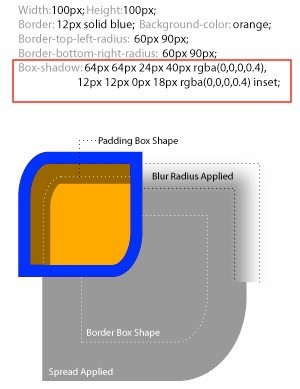
. Box-shadow-2 is xy no offset, shadow size 10px, no extended radius, color s0CC i.e. rgba (0, 204, 204, 1), here we are using the color HEX value;
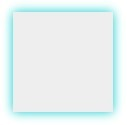

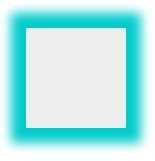

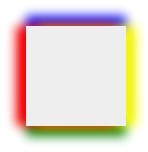
And there is also a multi-shadow sequential issue involved here. When you use more than one shadow property for the same element, you need to be aware of its order, and the shadows written first appear at the top, such as .box-shadow-7 with a different fuzzy value:
.box-shadow-7{
box-shadow:0 0 10px 5px black,
0 0 10px 20px red;
}
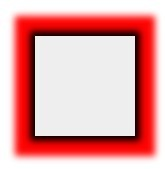
.box-shadow-8{
box-shadow:0 0 10px 20px red,
0 0 10px 5px black;
}
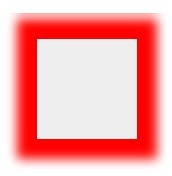
The effect rendered by .box-shadow-9 is similar to that of boder:1px solid red, but the effect of box-shadow differs from the boder effect in terms of object height, which is exactly one extended radius larger than the height of the boder. And shadows don't affect any layout of the page, as evidenced by looking at the layout diagram under the firebug.
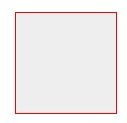
Simulate the box-shadow shadow effect in css3 under ie
Note: The filter must be used with the background property or it will fail.
Simulate the box-shadow code in css3 under IE:
.box-shadow{
filter: progid:DXImageTransform.Microsoft.Shadow(color='#969696',Direction=135, Strength=5);/*for ie6,7,8*/
background-color: #ccc;
-moz-box-shadow:2px 2px 5px #969696;/*firefox*/
-webkit-box-shadow:2px 2px 5px #969696;/*webkit*/
box-shadow:2px 2px 5px #969696;/*opera或ie9*/
}
li.blk-item{
width:423px;
height:229px;
float:left;
padding:8px;
margin:2px 18px 13px 21px;
display:inline;
border:1px solid #d3c998;
border-radius:2px;
filter:progid:DXImageTransform.Microsoft.Shadow(color='#d3c998', Direction=135,Strength=5);/*for ie6,7,8*/
background-color: #fff;
-moz-box-shadow:2px 2px 5px#d3c998;/*firefox*/
-webkit-box-shadow:2px 2px 5px#d3c998;/*webkit*/
box-shadow:2px 2px 5px #d3c998;/*opera或ie9*/
}
It is used by downloading it and putting it in your server directory
Write the following code in your .lt;head>/head>
The disadvantage of this script is that IE only supports a portion of the box-shadow value. Note:
1, when you use this htc file, your CSS inside, as long as written box-shadow, -moz-box-shadow or -webkit-box-shadow of any kind, IE will render.
<script type="text/javascript">
$(document).ready(function(){
if($.browser.msie) {
$('.obj').boxShadow(-10,-10,5,"#0cc"); //obj元素使用了box-shadow
}
});
</script>
border-top-left-radius:[<length> | <percentage> ] [ <length> | <percentage> ]?
Default: 0
Value:
<length>:
Sets the length of the object's upper-left fillet radius with a length value. Negative values are not allowed
<percentage>:
Set the upper-left fillet radius length of the object as a percentage. Negative values are not allowed
Description:
Set or retrieve the upper-left fillet border of the object. T wo parameters are provided, two parameters are separated by spaces, each parameter allows 1 parameter value to be set, the first parameter represents the horizontal radius, and the second parameter represents the vertical radius, which is equal to the 1st argument by default if the second parameter is omitted. S uch as setting border-top-left-radius: 5px10px; R epresents a horizontal fillet radius of 5px for the top-left corner and a vertical fillet radius of 10px. The corresponding script feature is BorderTopLeftRadius.
Set text shadow text-shadow
Grammar:
text-shadow : offset-x || offset-y || opacity || color/* For text-shadow */
#example {text-shadow: 1px 1px 2px #d8d8d8; }The effect is as follows:

/* For text-shadow 多重阴影 */ #example-muti {text-shadow: 1px 1px 2px #c10ccc, 1px 1px 2px #648cb4, 1px 1px 6px #cc150c;}

Compared to pictures, it's a lot easier to solve a problem with one property now. H owever, as you may have guessed, the IE of the cup does not support CSS shadows (so neither text-shadow IE8 and the following versions support box-shadow), so for IE, if you need to achieve the same effect above, you need to use IE private filter shadow or dropshadow. The specific use of these two filters will also be somewhat different, as detailed below:
If you use the shadow filter, developers can write code like this for the above examples:
progid:DXImageTransform.Microsoft.shadow(Color='#d8d8d8', Direction='135', Strength='2'); zoom: 1; }#example-ie {filter: progid:DXImageTransform.Microsoft.DropShadow(OffX='1', OffY='1', Color='#d8d8d8', Positive='true'); zoom: 1; }

Both filters also support multiple shadows, which developers can write as follows, but will actually work much worse than text-shadow.
/* IE 下多重阴影 */
#example-ie-muti {filter: DropShadow(OffX='1', OffY='1', Color='#c10ccc', Positive='true') DropShadow(OffX='1', OffY='1', Color='#648cb4', Positive='true') DropShadow(OffX='1', OffY='1', Color='#cc150c', Positive='true'); zoom: 1; }